Ian a regular reader of the blog recently sent me a couple of photos of some snakes he’d seen on the French side of the Pyrenees to identify.
He’d found a lovely example of a green whipsnake. It’s a long thin snake which can rach up to 2 metres but is usually quite a bit shorter than this around 1 to 1.5 metres.
You can find them across most of southern Europe and like warm scrub covered areas. I don’t come across these very often but when I do they often stay perfectly still and then shoot off very fast. The name whipsnake is for the speed of their movement. They’re non-venemous so there was no need to worry Ian!
Our guide Hannah came across a fantastic sight last summer on one of our Lakes & Valleys holidays of a pair of courting green whipsnakes coiled around each other and sliding fast down the middle of the footpath. She got this fantastic photo.
I’m often asked by guests about whether they’ll see snakes on our hikes – although I get the feeling they’d usually prefer not too! There are quite a few snakes around however they usually feel your vibrations long before you see them. The best time to see them is on a cold morning when they lay on the warm paths to heat up – they are often reluctant to move when like this so you have to be careful not to stand on them although it does make for great photos!
The only venemous snake that I’ve seen is the Asp Viper (vipera aspis) which is a lovely coloured snake. It has a distinctive dark zig-zag pattern along it’s back and is usually around 50 cm long. These are quite common on the GR11 alongside the Rio Aguas Limpias towards Refugio Respomuso near Sallent de Gallego. The picture below (and the header image above) was taken while there was stil snow alongside the path and the snake stayed still for ages obviously too cold to move. These are reasonably venomous so try to avoid being bitten and if you are seek help straight away.
Good luck in your snake spotting this summer and send me any good photos you manage to snap!
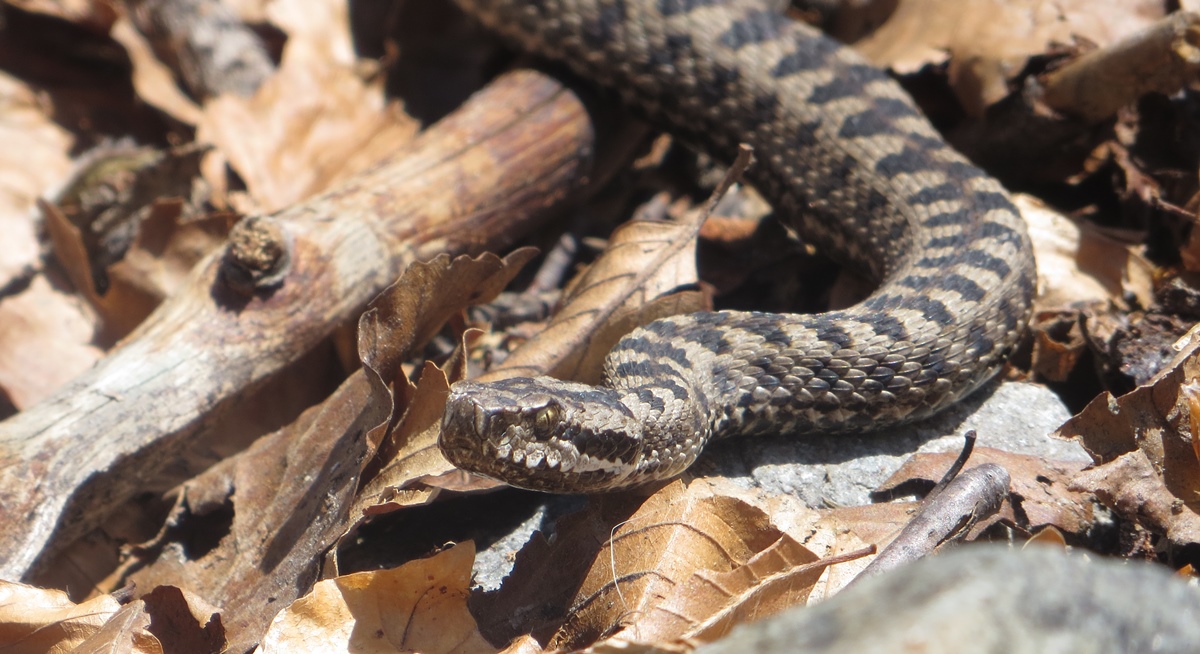

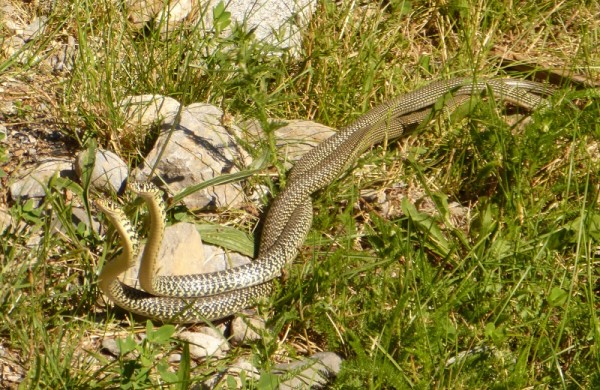
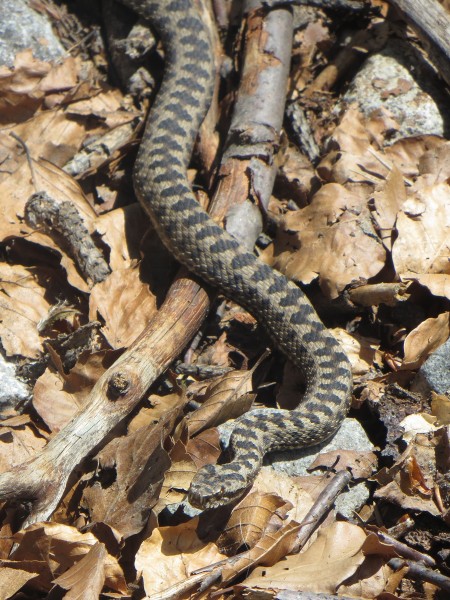
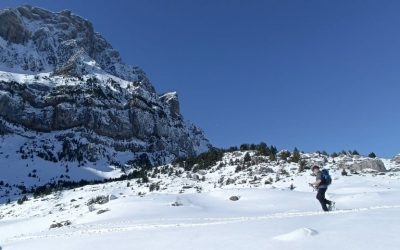
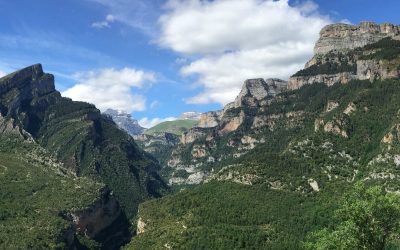

0 Comments